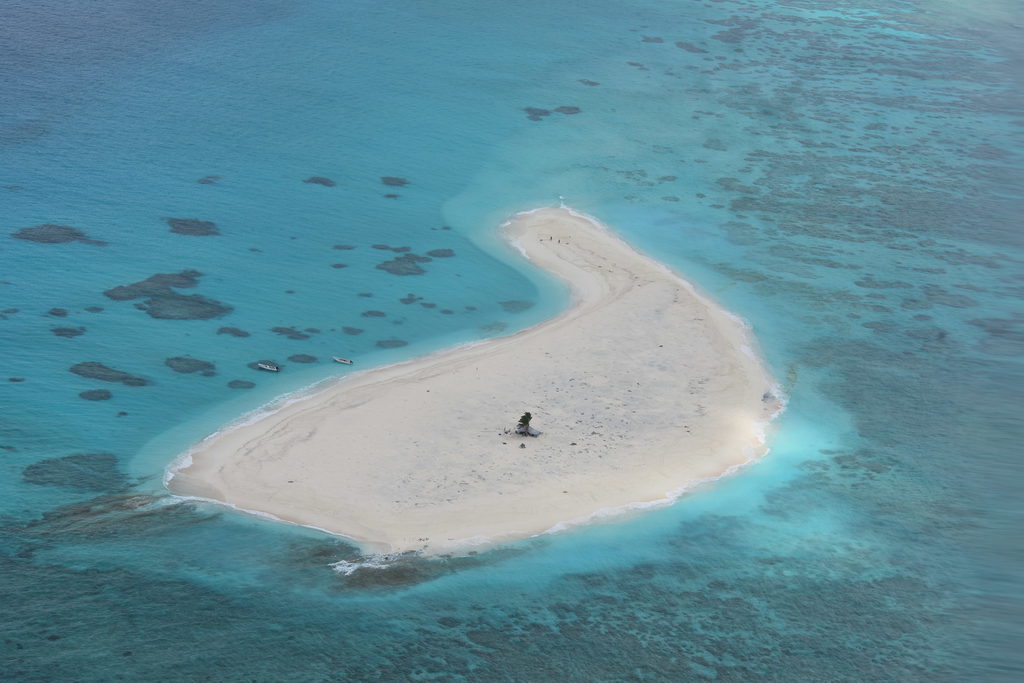This week we re-look at one of Ana Madigibuli’s adventures. She travelled to experience a sanctuary for turtles, a sand cay discovered by Captain James Wilson in the 1700s. This article was published in The Fiji Times in December of 2020.
With 11.250km picturesque reef system, Duff Reef on Vanuabalavu, Lau is a marine biodiversity haven.
The entire submerged Duff Reef structure or Cakau Galu as it is traditionally known, is under the customary ownership of the Yavusa Qalitu of Mavana Village.
Its traditional name Cakau Galu, meaning the silent reef is a representation of where the reef is situated – a soundless rich marine ecosystem in the middle of the deep sea passage.
Cakau Galu acts as a demarcation line or iqoliqoli boundary for the yavusa Qalitu of Mavana and the iqoliqoli of the Turaga na Tui Cakau.
Yavusa Qalitu spokesman, Mesake Koroi said the reef system between those waters up to Vanuabalavu was all part of the yavusa Qalitu’s iqoliqoli or traditional fishing grounds.
“When our forefathers first came to settle these islands they had sailed through these waters and reef systems,” he said.
“While on that journey our ancestors then went to Qilaqila (northwest) of Vanuabalavu and later settle in Mavana”
He said that was how their ancestors had discovered Cakau Galu and the neighbouring pristine reef systems situated close to Vanuabalavu.
He said they were so blessed to have customary ownership for those areas until today -particularly looking at how big those traditional fishing grounds are.
On getting to the reef, it takes two hours by boat from Mavana Village and it is an hour and a half flight by seaplane from the Nausori international Airport.
On the long-stretched Duff Reef, there is a five hectares sand cay island which is a turtle sanctuary declared by the people of yavusa Qalitu and its supporting partners.
The sand cay has fine white sand accompanied with a few sand boulders formed over the years. On the formation of the sand cay, according to the Encyclopedia of Modern Coral Reefs the cays are formed when ocean waves and tidal currents transports loose segments across the reef top surface to a dispositional node where concentration occurs and the sedimentary piles rises above the high tide.
Over time soil and vegetation may develop on the cay surface but for the sand cay on Duff, the two coconut trees are the only form of vegetation to have survived the weather conditions on the reef.
According to Mavana villagers who were on. Duff Reef last month, several attempts to plant more coconut trees on the cay had been unfruitful
The sand cay according to Conservation National is purely a turtle nesting site with an unaccountable number of nests and tracks that crisscrosses along the stretch of the island, The cay had been recently renamed by the turtle survey team as “Nodrai Vicovico a Marama” translated to “the belly button of a lady” island as it is a significant nesting capital of the green turtles in the Lau group.
There is no indication that the island is a foraging ground for the turtle but instead has sand boulders, reef structures and sandy substrate around it as discovered by the CI survey team during snorkelling.
On the English name given to the reef, villagers knew that the name Duff was linked to a famous explorer that sailed their waters in the 1700s.
Mr Koroi said the reef could’ve been named after an explorer’s ship that sailed there centuries ago. The famous sailor was none other than British explorer, Captain James Wilson. It was Capt Wilson’s ship that bears the name — the Duff.
The ship was famous in the 1700 for its many voyages, particularly on its mission work around the Pacific.
The ship, according to the Ship Stamp Society was built in 1794 by Deter Everitt Mestaer at the King and Queen Dock at Rotherhithe, for K. Carbine.
The British Museum in describing the Duff highlighted that the ship had set sail with the London Missionary Society (LMS) on August 10, 1796, which landed in Tahiti on March 61797, which took first British missionaries to Tahiti at The time.
Also, the famous explorer had explored many islands in the Pacific including Tonga and Marquesas Islands then.
The Historical Dictionary of the Discovery and Exploration of the Pacific Islands lists Captain James Wilson as the first European visitor to explore Vanuabalavu (where the Duff Reef is situated), Ogea and Fulaga in Lauin 1797.
According to Captain Wilson’s chart, the Duff had struck the reef at night and the ship remained fast about five minutes on September 13, 1797.
This was after Dutch explorer Abel Tasman in 1643; British explorer Captain James Cook in 1774 and William Bligh in 1789 to 1792 had explored other islands in Fiji.
According to People Pill, a website that publishes news and biographical information of people, Captain Wilson on board the Duff had surveyed or confirmed the locations of those three islands in Lau and numerous other islands in the Pacific.
Other islands included Mangareva in the Gambier Islands in French Polynesia, Pukarua in the Tuamotus, and Satawal, Elato, and Lamotrek, in the Caroline Islands.
He published an account of his voyage on the Duff “A Missionary Voyage to the Southern Pacific Ocean” 1799.
With that strong link to history plus its rich biodiversity, the reef has become a remarkable site for researchers. The protection of the reef has become a fundamental aspect for the people of yavusa Qalitu because not only does the reef hold great historical and traditional values, it also allows the villagers to provide the best resources for their future generation.
Today marine biologists continue to show keen interest on the marine reserve, even before it was declared a marine protected area.
Mr Koroi said from the research done by a marine biologist, there are three types of turtles in the Pacific that went to breed on the reef.
“It is not a place where turtles forage as it doesn’t contain any of their food sources but it’s just specifically for nesting,” Mr Koroi said.
On the reef becoming a marine protected area, Mr Koroi said the taboo not only allowed the protection of the sand cay but also the surrounding areas in the reef system from unwanted drivers.
“Fishing of any form is banned on these waters particularly on the reef. We are trying to preserve our iqoliqoli from drivers,” he said.
“We had decided with the leader of the yavusa Qalitu, the Turaga na Tui Kobuca and former Prime Minister, Laisenia Qarase when he was alive for the reef to be a marine protected area.
“This is our contribution to the protection of iqoligoli in Fiji in relations to Fiji’s fight against climate change.”
He said the yavusa didn’t have a lot of lands but they had a vast area of the reef system in their iqoliqoli.
“We just come to complete the work so that everyone knows our stand in this positive move,” he said.
“Now they will work on protecting the reef even though it might be a challenge. It takes two hours by boat to get to Duff from Vanuabalavu and it costs money but that will not hinder our efforts to protect this sanctuary.”
Two hours on the boat from Vanuabalavu to get to Duff and it cost money.
The vanua has showed their appreciation for the effort made in protecting their marine resources.
History being the subject it is, a group’s version of events may not be the same as that held by another group. When publishing one account, it is not our intention to cause division or to disrespect other oral traditions. Those with a different version can contact us so we can publish your account of history too — Editor.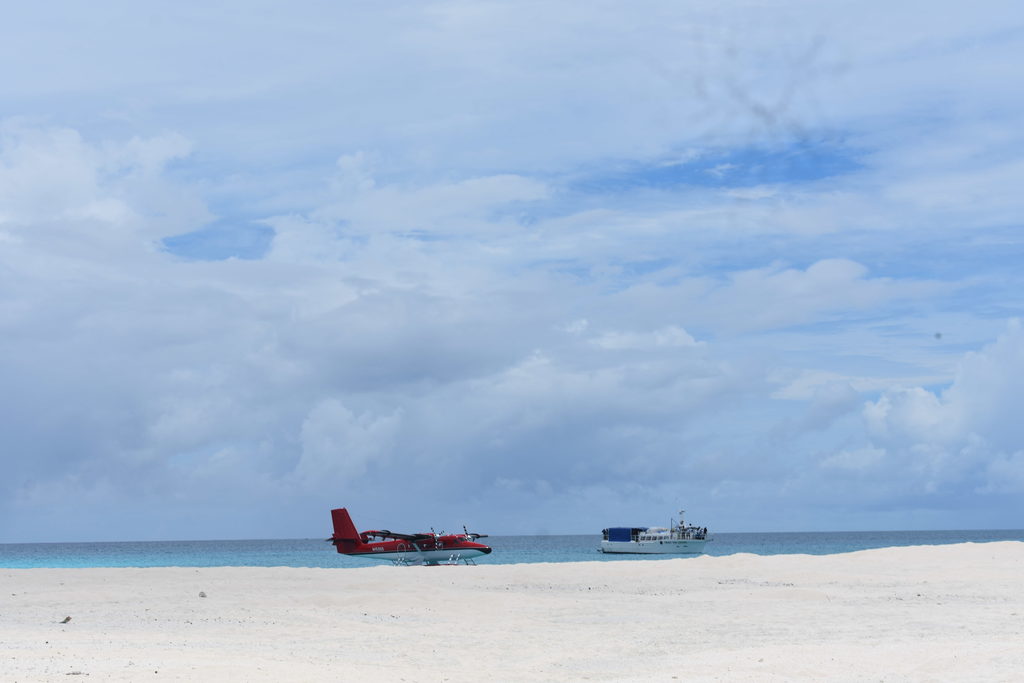
a seaplane on the sand cay. Picture: ANA MADIGIBULI
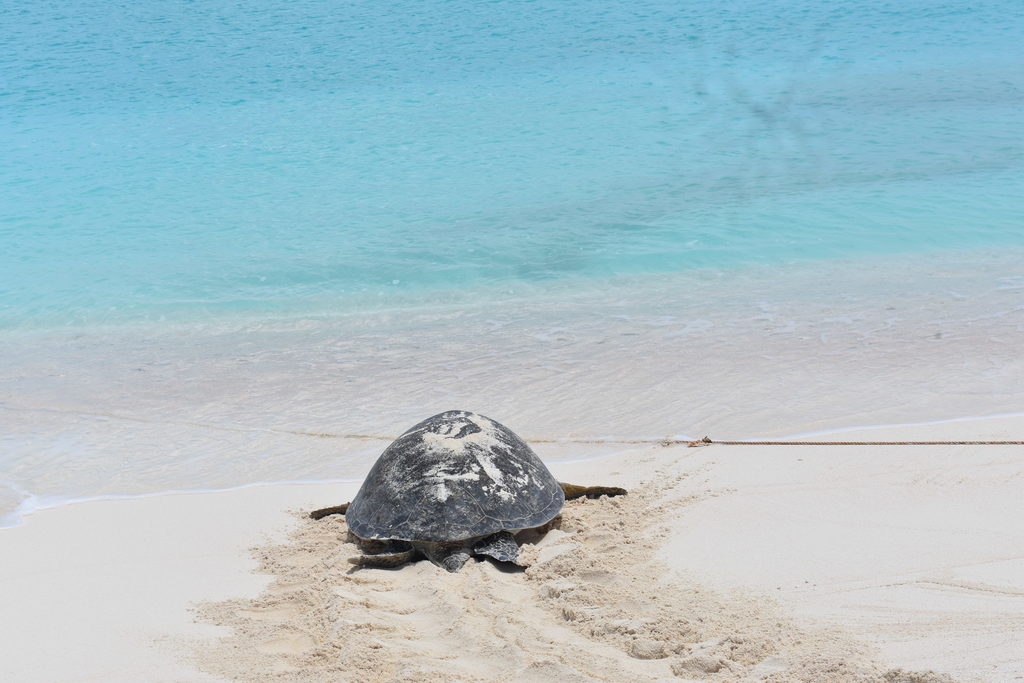
A turtle makes its way back into the ocean after being tagged. Picture: ANA MADIGIBULI
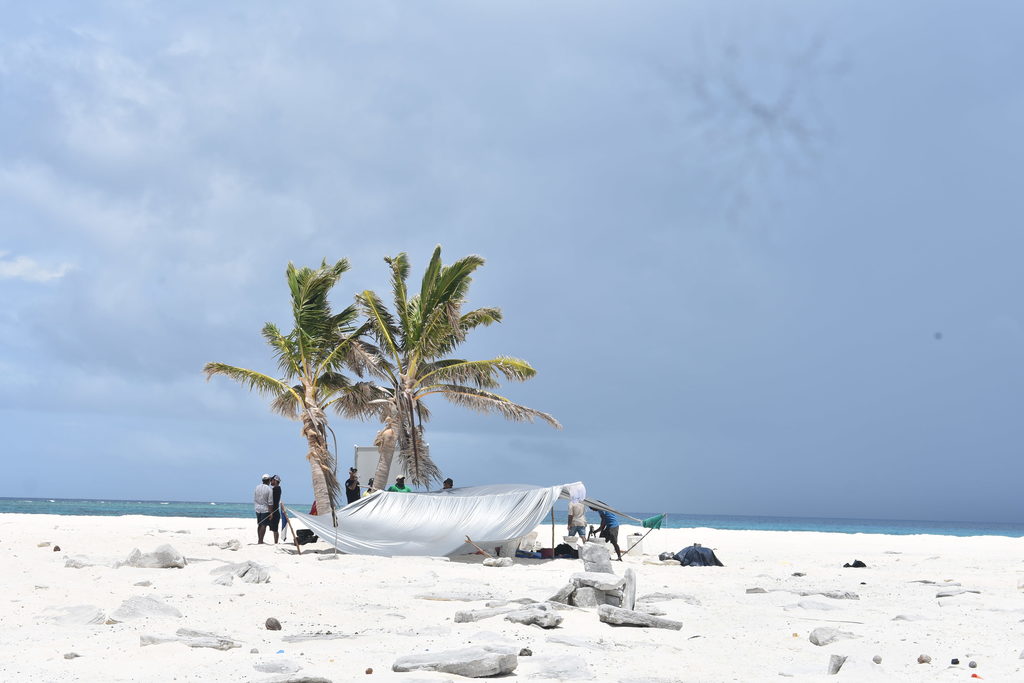
Picture: ANA MADIGIBULI
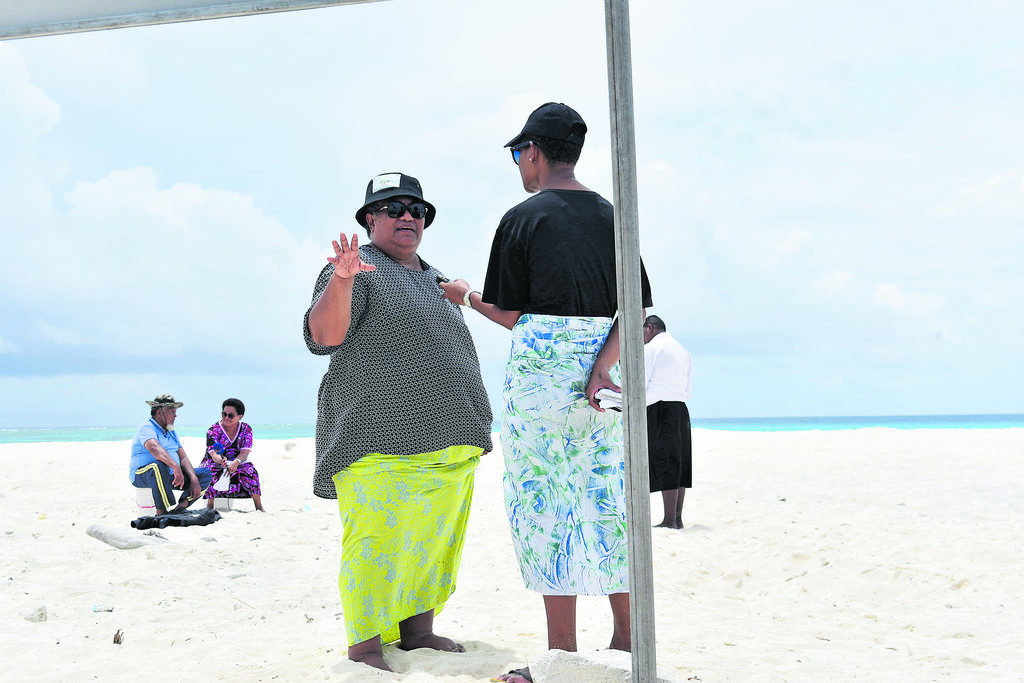
Media personnels conduct interviews during their visit to the Cay Sand Island. Picture: ANA MADIGIBULI
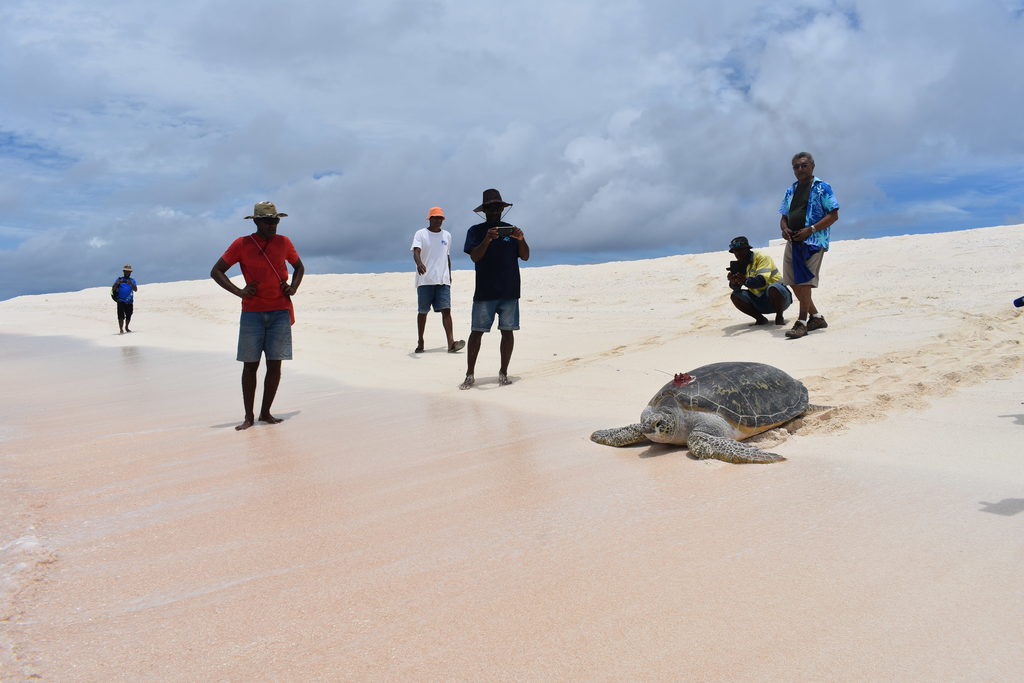
On the long-stretched Duff Reef, there is a five hectares sand cay island which is a turtle sanctuary declared by the people of yavusa Qalitu.
Picture: ANA MADIGIBULI
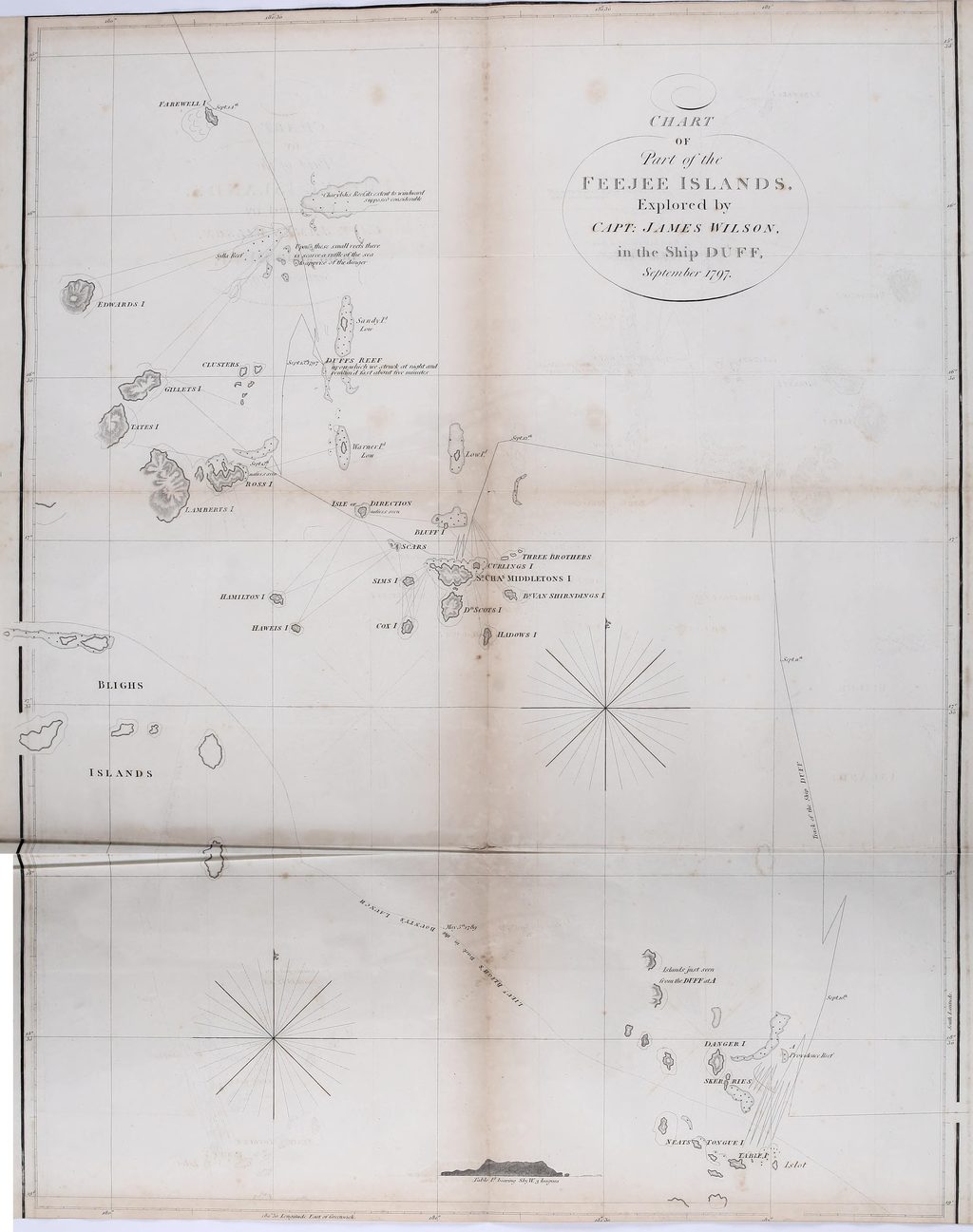
The Duff Reef in Captain James Wilson’s chart.
Picture: www.upload.wikimedia.org
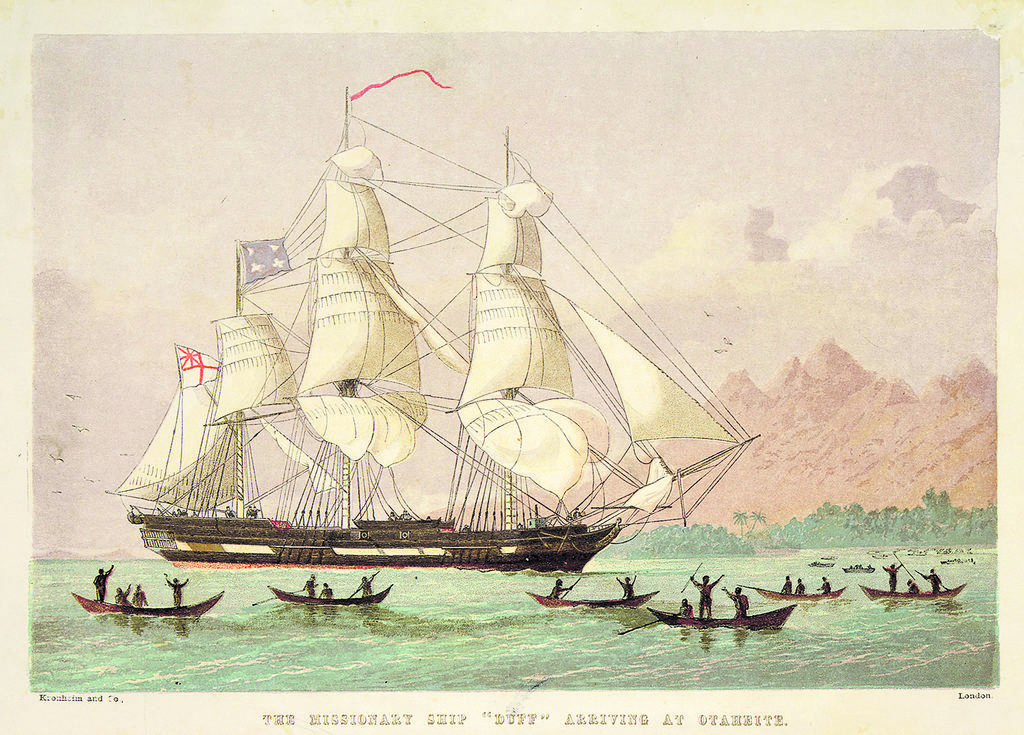
The missionary ship Duff arriving (1797) at Otaheite, lithograph. Picture: Kronheim Co/WIKIPEDIA

